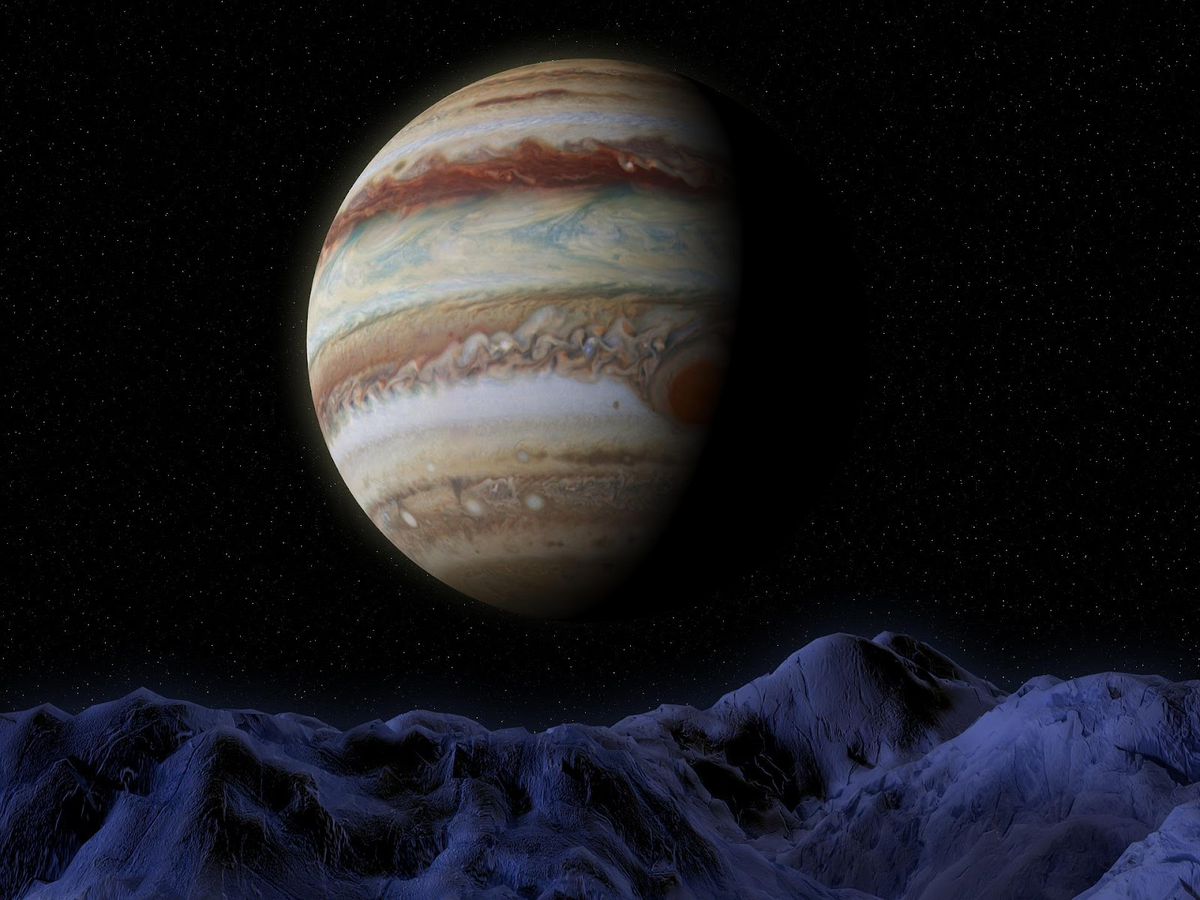
Jupiter is one of the brightest planets in the night sky despite how far away it is from Earth. It is easy to observe by most people even without a telescope.
Is Earth bigger than Jupiter? No, it is not. Jupiter holds the rank of the biggest planet in the entire solar system besides being the fourth brightest.
But exactly how much bigger is Jupiter than Earth? Let’s find out!
How Big Is Jupiter & How Much Bigger Than Earth Is It?
Jupiter is massive in size. It has a circumference of 272,946 miles. Its volume is 1,321 times more than Earth’s. It is 11 times the width of Earth. In fact, if you take the mass of all the planets in our solar system, Jupiter will outweigh them with 2.5 times more mass!
How Big Is Jupiter?
Jupiter holds the fifth position from the Sun in our solar system. The gas giant is the biggest planet in it.
At the equator, the planet’s diameter measures 88,846 miles, and at the poles, it has a diameter of approximately 83,082 miles. This makes its mean radius about 43,440 miles.
The difference in diameter at the equator and poles is due to the planet’s oblate spheroid shape. The planet’s shape is a result of fast rotation around its own axis. Despite its enormous size, Jupiter completes a single rotation in merely ten hours.
Though the planet is the biggest in our solar system, it pales in comparison when put up against the Sun.
The width of the Sun is 10 times that of Jupiter. The diameter of the Sun is about 864,000 miles as compared to Jupiter’s 83,082 miles.
How Much Does Jupiter Weigh?
The planet earned its name as a gas giant because of its primary composition. It is mainly composed of helium and hydrogen. It has a mass of 4.184 x 1027 lb.
Though it is obviously much bigger than Earth, its density is a fifth when compared to our planet at 2,235 lb/cu yd. This is due to its gaseous composition as opposed to Earth’s solid composition.
The planet has a volume of 3.434×1014 cu mi. This is 1,321 times greater than Earth’s volume.
How Much Larger Is Jupiter Than Earth?

Jupiter is significantly more massive than Earth. In fact, if you combined all the other planets in the solar system, Jupiter will still be 2.5 times bigger than them.
Its radius of 43,440 miles has nothing on our planet’s mean radius of 3,960 miles. This makes its radius 11 times more than Earth’s. If you stack about 11 Earths, you will be able to match Jupiter’s diameter.
While Earth has a volume of 2.59876×1011 cu mi, Jupiter has a staggering volume of 3.434×1014 cu mi. For comparison purposes, you can fit about 1,321 Earth-sized planets inside Jupiter.
In terms of mass, the planet is approximately 318 times more massive than Earth.
The planet’s surface area of 2.3733×1010 sq mi is also 120 times more than Earth’s mere 196,940,000 sq mi.
However, despite the difference in mass between the two planets, Earth’s density outweighs Jupiter’s density. Jupiter has only one-fifth of Earth’s density. This is because it is primarily made up of gases, whereas our planet is composed of rocky material.
The comparison table given below will help you get a clear picture of how much bigger Jupiter is than Earth.
Variables | Jupiter | Earth |
Circumference | 272,946 mi | 24,901 mi |
Diameter | 88.846 mi | 7,917.51 mi |
Radius | 43,440 mi | 3,960 mi |
Mass | 4.184 x 1027 lb | 1.3166×1025 lb |
Volume | 3.434×1014 cu mi | 2.59876×1011 cu mi |
Why Is Jupiter So Massive In Size?
Jupiter owes its big size to its age. The planet started to take shape after the formation of the solar system—nearly 4.5 billion years ago. Swirling dust and gas came together under the pull of gravity to form this giant planet.
It ended up taking in the majority of the gas and dust that remained after the Sun’s formation and reached its giant proportions.
Though the planet is composed of the same ingredients as that of a star, it did not grow to massive enough proportions to ignite. Only if it were to grow 75 times its present mass would it become a star.
Travel Time On Jupiter: How Long Will It Take You To Travel Around It?

Let’s put the massiveness of Jupiter into more understandable terms.
How long do you think it would take you if you had to walk (non-stop) around the giant planet? If you were walking at the speed of 3 mph, then it would take you about 90,982 hours. This is about 3,791 days or 10.4 years!
If you decided to drive (non-stop) around the planet at a speed of 70 mph, it would take nearly 3,899 hours to get all the way around it. This is 162 days or 5.4 months.
Do you think flying would allow you to complete a revolution around it quicker? It would, but it would still take 19 days even if your plane was flying at a speed of 600 mph.
Frequently Asked Questions
Does Jupiter Have Rings?
Yes, Jupiter has faint rings made of tiny, dark particles. These rings were discovered by Voyager 1 in 1979.
How Fast Does Jupiter Spin?
Jupiter has a nine-hour, 55-minute day. It spins 27 times faster than our planet. It spins at a speed of nearly 28,273 mph.
How Far Is Jupiter from Earth?
Since the planets move along an elliptical path, their positions are constantly changing, and so is the distance between them. The distance between the two planets at their closest points is 365 million miles. When they are at their farthest, Jupiter is at a distance of 601 million miles from Earth.
The Bottom Line
Jupiter rightly holds the rank of the biggest planet in the solar system. This gas giant can fit 1,321 Earth-sized objects inside. It is 11 times as wide as our planet and has 120 times more surface area.
There is no question of the massiveness of Jupiter. In fact, even with the combined masses of all of our solar system, Jupiter is still 2.5 times bigger!
